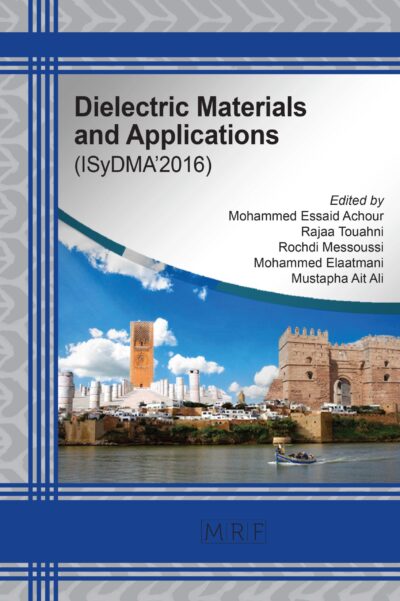Analysis and description of under-water pressure waves usable for forming applications
Linda Fleischer, Verena Psyk, Maik Linnemann, Martin Dix
Abstract. In this paper, the pressure wave which is running through water and causing a deformation is analyzed. A special focus is put on the description of the pressure wave on basis of the maximum pressure, the pressure distribution, and the phase velocity of the pressure wave. For the description and analysis of the pressure wave a numerical simulation model is created. It comprises the water and an impulse-initiator, which is mechanically moved into the water. The maximum pressure, the pressure distribution, and the phase velocity are analyzed considering individual observation points which are distributed over the radius of the water and arranged at different observation levels. The simulation model is validated by forming tests using a perforated sheet die to visualize the pressure distribution.
Keywords
Electromagnetic Forming, Membrane Impulse Process, Wave Propagation, Pressure
Published online 5/7/2025, 10 pages
Copyright © 2025 by the author(s)
Published under license by Materials Research Forum LLC., Millersville PA, USA
Citation: Linda Fleischer, Verena Psyk, Maik Linnemann, Martin Dix, Analysis and description of under-water pressure waves usable for forming applications, Materials Research Proceedings, Vol. 54, pp 2083-2092, 2025
DOI: https://doi.org/10.21741/9781644903599-224
The article was published as article 224 of the book Material Forming
![]() Content from this work may be used under the terms of the Creative Commons Attribution 3.0 license. Any further distribution of this work must maintain attribution to the author(s) and the title of the work, journal citation and DOI.
Content from this work may be used under the terms of the Creative Commons Attribution 3.0 license. Any further distribution of this work must maintain attribution to the author(s) and the title of the work, journal citation and DOI.
References
[1] Neugebauer, R., Bouzakis, K.-D., Denkena, B., Klocke, F., Sterzing, A., Tekkaya, A.E., Wertheim, R., 2011. Velocity effects in metal forming and machining processes. CIRP Annals 60 (2), 627–650. https://doi.org/10.1016/j.cirp.2011.05.001
[2] Psyk, V., Risch, D., 2012. High-Velocity Forming, in: Altan, T., Tekkaya, A.E. (Eds.), Sheet Metal Forming. ASM International, pp. 227–248. https://doi.org/10.31399/asm.tb.smfpa.t53500227
[3] V. Psyk, D. Risch, B.L. Kinsey, A.E. Tekkaya, M. Kleiner, 2011. Electromagnetic forming—A review. Journal of Materials Processing Technology 211 (5), 787–829. https://doi.org/10.1016/j.jmatprotec.2010.12.012
[4] Linnemann, M., Scheffler, C., Psyk, V., 2021. Media-based forming of micro-flow channels into thin sheet metal by electromagnetically driven tools. ESAFORM 2021. https://doi.org/10.25518/esaform21.468
[5] Sergey F. Golovashchenko, Alan J. Gillard, Alexander V. Mamutov, 2013. Formability of dual phase steels in electrohydraulic forming. Journal of Materials Processing Technology 213 (7), 1191–1212. https://doi.org/10.1016/j.jmatprotec.2013.01.026
[6] Alexander V. Mamutov, Sergey F. Golovashchenko, Viacheslav S. Mamutov, John J.F. Bonnen, 2015. Modeling of electrohydraulic forming of sheet metal parts. Journal of Materials Processing Technology 219, 84–100. https://doi.org/10.1016/j.jmatprotec.2014.11.045
[7] Linnemann, M., 2022. Analyse und Automatisierung von inkrementellen elektromagnetischen Umformprozessen. Dissertation.














